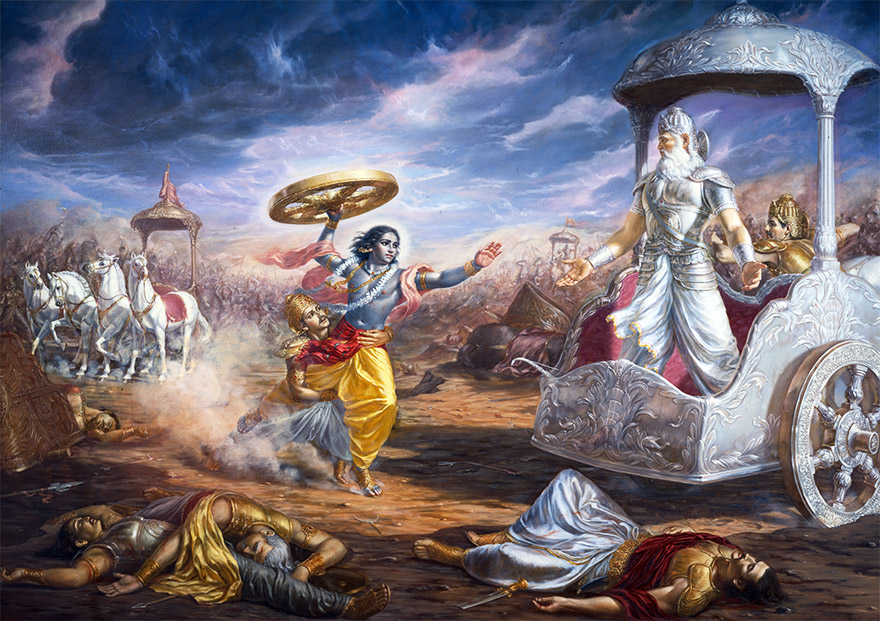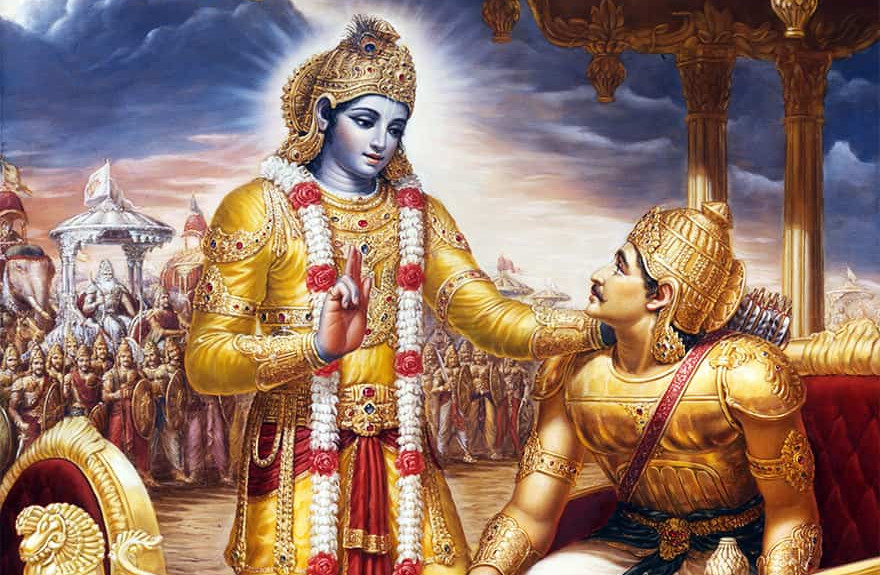When I first picked up the Bhagavad Gita, I wasn’t looking for answers to grand philosophical questions. I was simply curious. Life, with all its twists and turns, can sometimes feel overwhelming. And the Gita—a 700-verse dialogue between Arjuna, a warrior in moral crisis, and Krishna, his guide—felt like an ancient compass pointing toward inner calm amidst the chaos. But what struck me most was how timeless and universal its wisdom is. You don’t have to be religious to find its teachings valuable; they resonate deeply with anyone searching for meaning, clarity, and peace.
Let’s unpack the Gita together, step by step, in simple language and with everyday examples that make its profound ideas accessible to all.
The Context: Why Was the Gita Even Spoken?
Imagine being at a crossroads in your life, where every choice feels equally daunting. That’s where Arjuna found himself—on a literal battlefield, torn between his duty as a warrior and his love for family. The opposing army was filled with his relatives, teachers, and friends. Overwhelmed with doubt, Arjuna dropped his bow and turned to Krishna, his charioteer and mentor, for guidance.
How many of us have been in Arjuna’s shoes—not on a battlefield but in moments of decision where the stakes feel impossibly high? Whether it’s choosing a career path, resolving a conflict, or figuring out our next step, life’s dilemmas can paralyze us. The Gita, at its core, is about navigating these inner battles.
Key Themes and Lessons from Bhagavad Gita
1. Understanding Your True Self
One of the Gita’s central ideas is the distinction between the body and the self. Krishna tells Arjuna:
“You are not this body; you are the eternal soul within.” (Chapter 2, Verse 20)
Think of it like this: imagine you’re wearing a virtual reality headset. While immersed in the game, you might feel joy, fear, or frustration. But deep down, you’re aware that you’re separate from the character you’re playing. Similarly, the Gita reminds us that we are not our physical forms or the roles we play in life—we are the consciousness observing it all.
This perspective can be liberating. It’s a reminder that our worth isn’t tied to external labels like job titles, relationships, or achievements. Who we truly are goes much deeper.
2. Detachment: Doing Without Clinging
Another powerful idea is the concept of detachment. Krishna advises:
“You have a right to perform your duties, but you are not entitled to the fruits of your actions.” (Chapter 2, Verse 47)
This doesn’t mean we shouldn’t care about the results of our efforts. Instead, it’s about not being emotionally entangled with outcomes. Imagine planting a tree. You water it, nourish it, and protect it from pests. But can you guarantee it will bear fruit? Not really. All you can do is give your best.
In life, detachment helps us reduce anxiety and stress. Whether it’s a job interview, a project, or a relationship, focusing on the effort rather than obsessing over the result brings peace.
3. Purpose and Dharma
The Bhagavad Gita introduces the idea of Dharma, often translated as duty or purpose. Krishna tells Arjuna:
“It is better to fail in following your own purpose than to succeed in following someone else’s.” (Chapter 3, Verse 35)
In a world that constantly compares us to others, this lesson is gold. Your path in life is uniquely yours. Maybe you’re an artist in a family of engineers or someone passionate about teaching when society glorifies corporate jobs. The Gita’s wisdom is simple: embrace your authentic self. Walking your own path—even if it’s tough—is far more fulfilling than chasing someone else’s dream.
4. Equanimity: Staying Balanced
Life is a rollercoaster, full of highs and lows. The Gita teaches us to stay balanced:
“Treat success and failure, pleasure and pain, gain and loss, as equal.” (Chapter 2, Verse 38)
This doesn’t mean becoming indifferent or unemotional. It’s about not letting external events control your inner peace. Think of yourself as the sky. Emotions, like clouds, may pass through—some dark, some light. But the sky itself remains untouched.
For example, if you’ve ever faced criticism at work, you know how easy it is to spiral into self-doubt. But when you anchor yourself in equanimity, you can take constructive feedback without letting it shatter your confidence.
5. Devotion and Surrender
Krishna emphasizes the power of surrender:
“Give up all doubts and surrender completely to me. I will free you from all fears.” (Chapter 18, Verse 66)
Now, surrender doesn’t mean giving up on life. It’s about letting go of the illusion of total control. Think of driving in heavy fog. You can’t see the entire road, but you trust that the next stretch will reveal itself as you move forward. Similarly, life unfolds one step at a time. Trusting the process can dissolve fear and bring clarity.
How the Bhagavad Gita Changed My Perspective

Reading the Gita didn’t magically solve my problems, but it gave me tools to approach them differently. When I’m stressed about meeting a deadline or uncertain about the future, I remind myself of Krishna’s advice on detachment. When I feel like I’m not living up to societal expectations, I revisit the idea of Dharma and reconnect with my purpose.
One moment that deeply touched me was when I realized how universal its teachings are. You don’t need to be on a battlefield to feel Arjuna’s dilemma. And you don’t need to worship Krishna to embrace the wisdom he offers. The Gita speaks to the human condition—to anyone seeking meaning in the messiness of life.
Wrapping It Up
The Bhagavad Gita isn’t just a spiritual text; it’s a manual for life. It helps us navigate challenges, understand ourselves better, and find peace in a world that often feels chaotic. You don’t have to read all 700 verses to benefit from its wisdom. Start small. Pick one idea that resonates with you and try applying it to your life.
If there’s one takeaway, it’s this: life’s battles aren’t won by controlling everything around us. They’re won by mastering what’s within. The Gita reminds us that we already have that power; we just need to realize it.
What part of the Gita resonates with you most? Let’s discuss in the comments. Maybe together, we can make this ancient wisdom even more relatable and actionable for modern life.

